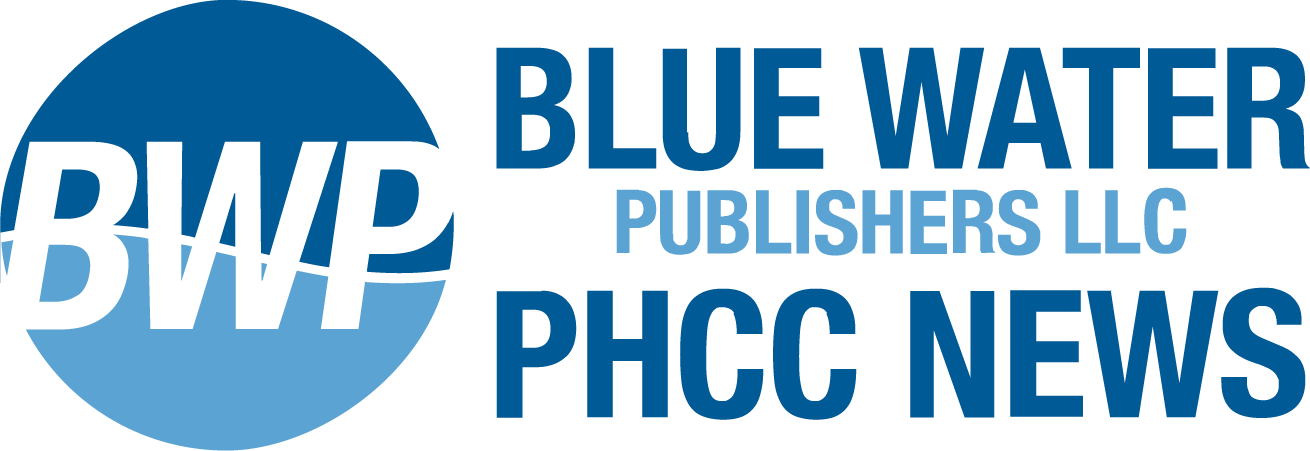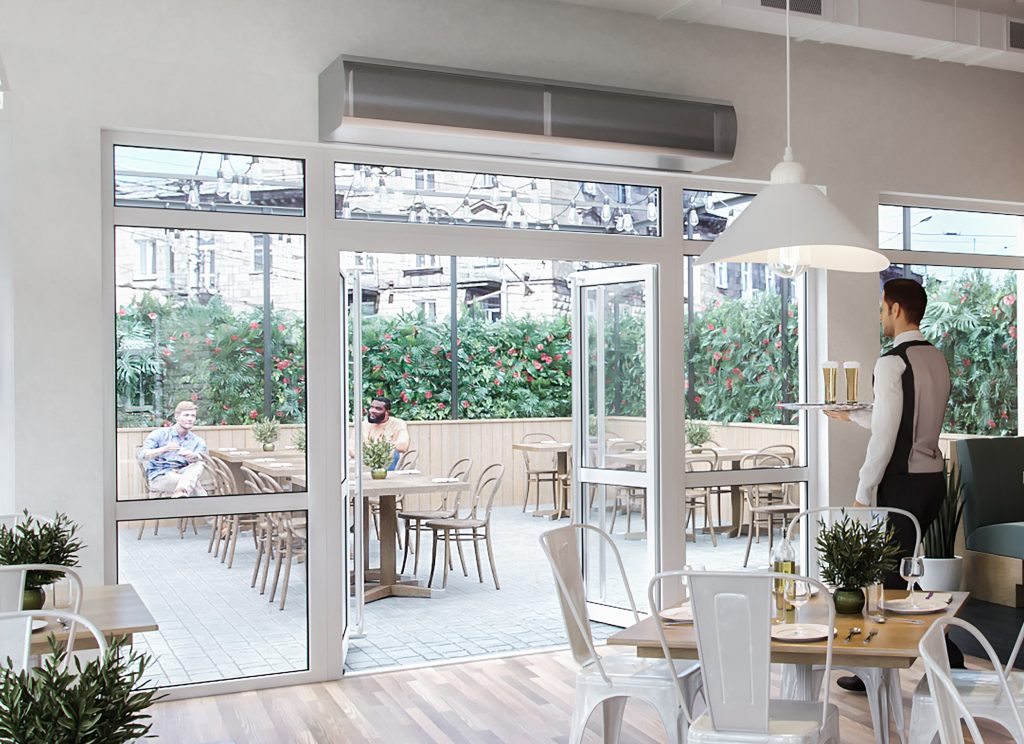The most common HVAC system COVID-19 preventatives are basically reactionary methods, rather than proactive measures.
During the pandemic, HVAC contractors and engineers have increased filtration, installed disinfection equipment inside HVAC systems and added more outdoor air dilution to offset the infiltration of SARS-CoV-2, the virus that causes coronavirus COVID-19 disease.
All three are recommended by ASHRAE and proven contaminant deterrents, but they are reactionary. The virus isn’t removed from the breathing space until it’s entrapped in the HVAC filter, disinfected in the airstream, or diluted with outdoor air and exhausted by the air handler.
Proactively pursuing a space’s airborne SARS-CoV-2 with ions is a better solution. Naturally occurring ions are located everywhere outdoors. They are constantly working to clean and disinfect the air.
Bringing that outdoor freshness safely indoors at higher ion levels is possible with a process called bipolar ionization. While ions have been known as air purifiers for decades, the question arises whether they’re effective against SARS-CoV-2.
One particular disinfection method, needlepoint bipolar ionization (NPBI) technology, has recently been third-party surface-tested by Innovative Bioanalysis, Cypress, Calif. The study proved NPBI neutralizes airborne viruses, including SARS CoV-2. The test proved a 99.4-percent success rate during 30-minute exposures1. NPBI also disinfects mold, mildew, allergens, bacteria and other airborne biological contaminants.
The study has driven the HVAC industry to find ways of distributing ions within spaces to combat SARS-CoV-2. One new approach has been adopted by air curtain manufacturers that are integrating NPBI disinfection equipment into their equipment.
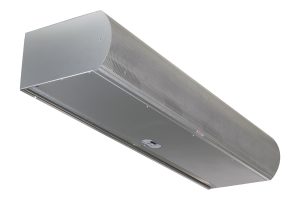 The air curtain, of course, is a well-established technology that’s more than seven decades old. It’s traditionally used to cut heating or cooling energy costs and protect the building occupants’ thermal comfort by separating indoor and outdoor environments at a doorway. Air curtains also prevent the infiltration of flying insects, dirt and vehicle emissions.
The air curtain, of course, is a well-established technology that’s more than seven decades old. It’s traditionally used to cut heating or cooling energy costs and protect the building occupants’ thermal comfort by separating indoor and outdoor environments at a doorway. Air curtains also prevent the infiltration of flying insects, dirt and vehicle emissions.
Now, proactive room air purification can be added to the list of air curtain advantages. Integrated virus deactivation technologies, such as ion generation modules inside of air curtains, offer a unique opportunity at main entrances. Ideal applications are waiting rooms at healthcare facilities, gyms, salons, boutiques, and cafes. Any entrance would benefit where people congregate and potentially exhale biological contaminants in confined spaces, such as hotel lobbies, retail stores, restaurants and other small to medium occupied spaces. Consequently, air curtain manufacturers have chosen more architectural and commercial models for integral air purification equipment, because these spaces require aesthetics.
While engineers typically specify air curtains for large projects, HVAC contractors are responsible for installing them. Contractors with regular service clients, such as strip center doctor/dental offices, fitness rooms, restaurants and other independent operations are perfect applications for marketing air purifying air curtains. Even when COVID-19 subsides, the NPBI modules will continue to provide improved indoor air quality.
How NPBI Works
The NPBI type of bipolar ionization creates a plasma field highly concentrated with positively and negatively-charged ions that aggressively attach to airborne contaminants. An air curtain outfitted with a supply airstream NPBI module distributes the ions throughout the space that the exterior doorway serves. These ions proactively seek and electrically attach to microscopic particles, pathogens and gases in the air and on surfaces. The negative ions are the disinfection workhorses, whereas the positive ions help prevent a negative charge build-up. The ions kill pathogens by robbing them of life-sustaining hydrogen. They also break down harmful volatile organic compounds (VOC) by using an electron volt potential under twelve (eV<12) to convert them into harmless compounds, such as O2, CO2, N2, and H2O.
The electron volt potential is important because higher voltages potentially generate harmful ozone. According to a 2015 ASHRAE position paper3, “ozone is harmful for health and exposure to ozone creates risk for a variety of symptoms and diseases associated with the respiratory tract.”
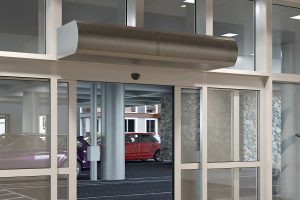
Ozone generation is an important consideration when choosing any disinfection product, because not all air cleaner brands or disinfection methodologies are ozone free. Therefore, it’s best to choose an air cleaner, whether its bipolar ionization or another type, that is listed as Environmental Claim Validated through UL-2998 for zero ozone emission and byproducts-free.
Another benefit is that the polarized sub-micron particles’ electrical attraction and subsequent agglomeration potentially enlarges them for easier filter capture. Upgrading filters is helpful in fighting COVID-19, however particles slip through the media depending on its density. MERV-11 is better than MERV-8 and MERV-13 is better than MERV-11 and so-on. The American Society for Health Care Engineering (ASHE) recommends the HEPA filter range of MERV-163, however the reported 0.08 to 0.09-micron size of SARS-CoV-2 can slip through. Therefore, ASHE rates HEPA as only 95-percent effective.
Ions electrically attach to all particles and create a snowball effect of enlarging them. If enough ions attach to airborne contaminants, they will eventually be entrapped in common MERV-8 filters, which is what air curtain commonly use. If they’re not drawn into the air curtain or HVAC system filter, the added weight eventually drops the particles out of the breathing zone for removal during daily building surface cleaning.
How Air Curtains Operate with NPBI
During open door cycles, the air curtain performs traditional environmental separation while also purifying the space air with ions. When the door closes, the air curtain’s digital controller automatically transitions to a quieter, low speed air purifier mode for continuous ion distribution throughout the space. For example, an air purifier setting on a 72-inch-long, two-motor/two NPBI module air curtain distributes a minimum ion density of 787 ions/inch2 (2,000 ions/cm2) per minute in a 6,000-square-foot interior space with a nine-foot-high ceiling.
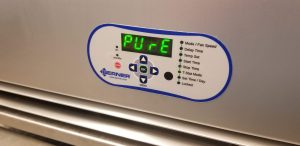 Proportionately, a three-motor/three-NPBI module air curtain covers up to 9,000 square feet. On the air purification nighttime unoccupied mode, the air curtain runs at a significantly higher velocity to provide optimum ion density. This de-stratifies the room air and comprehensively fills the entire space with air purifying ions prior to occupancy periods.
Proportionately, a three-motor/three-NPBI module air curtain covers up to 9,000 square feet. On the air purification nighttime unoccupied mode, the air curtain runs at a significantly higher velocity to provide optimum ion density. This de-stratifies the room air and comprehensively fills the entire space with air purifying ions prior to occupancy periods.
Most air curtains have multiple speeds today and 10-speed operation is very commonplace. A 10-speed air curtain over a 72-inch-wide double glass door ranges from 1,700 to 3,100-CFM and 1,050 to 1,800-RPMs. The emergence of energy-efficient EC motors in air curtains allows air disinfection mode operation below the 10-speeds for when the space is occupied. This air disinfection mode is approximately half the CFM of the lowest speed. This attenuates the fan noise to under 50-db, which equals a quiet office ambience, or the hum of a residential refrigerator compressor. During unoccupied after-hour periods, a deep-cleaning night mode using the highest fan speed can be used to disinfect the space with a full capacity of ion density.
Besides SARS CoV-2, other pathogens have been proven to be disinfected by NPBI as well. These tests consist of a petri dish containing a pathogen placed underneath a laboratory hood, then monitored to assess the pathogen’s reactivity to NPBI over time. This controlled environment allows for comparison across different types of pathogens. For example, Norovirus (93.5%–30 minutes), Human Coronavirus 229E (90%–60 minutes), Legionella (99.7%–30 minutes) and Clostridium Difficile “C-Diff” (86.8%–30 minutes) were all disinfected by third-party lab NPBI tests over the listed times and effectiveness4.
Specifying Air Curtains with Disinfection Capabilities
 Specifying air curtains for disinfection requires traditional design data, such as the doorway height and width to assure proper sizing for air sealing the doorway.
Specifying air curtains for disinfection requires traditional design data, such as the doorway height and width to assure proper sizing for air sealing the doorway.
While doorway size is critical, NPBI sizing concerns the room’s volumetric data. Each NPBI device installed in an air curtain handles approximately 2,500-CFM of space. While it could differ, based on specific room circumstances, one NPBI device per air curtain motor is a good rule of thumb.
Another rule of thumb is that one, two and three motor/module combinations in air curtains can handle 3,000, 6,000 and 9,000-square-feet of area, respectively. Surpassing those capacities in area square footage doesn’t necessarily mean ineffective disinfection. Instead, it results in a slower rate of pathogen reduction for that entire space. For example, a one motor/module air curtain lab-tested to disinfect a 3,000-square-foot area in 30 minutes will still disinfect a 9,000-square-foot area. However, since the area is approximately three times larger than the tested area of coverage, it will take longer to disinfect the entire area. The space surrounding the side of the doorway that the air curtain is installed, will be continuously filled with the disinfecting ions regardless of the room size, which is especially helpful as people enter and exit.
For more ion density, there is space in most air curtain models to have two piggy-backed modules per motor.
A CFM measurement criteria calculates well for ionization sizing, because the air volume is “cubic feet per minute” and an ion lifecycle generally is one minute. For example, an air curtain distribute 2,500-CFM can disinfect a 2,500-square-foot room with a properly sized NPBI module. An ion’s short lifecycle of approximately one minute is another reason why the air curtain controller is programmed to perpetuate room ion distribution.
There’s a recent surge of emerging research and new products for space disinfection, especially during the COVID-19 pandemic. Contractors can proactively market an air curtain/air purification product to their HVAC customers whose business traffic has been reduced by COVID-19 precautions. Confidence in sanitation efforts can help restaurants, retailers, healthcare providers and other businesses regain lost customers and employees.
Phil Thomas is Product Manager at Berner International, a New Castle, Pa.-based air curtain manufacturer. Thomas is a 25-year veteran of the product development industry with 15 years at Berner. He holds several patents related to air curtains including the incorporation of needlepoint bipolar ionization (NPBI), Venturi electric heaters and the Internet of Things. He holds a B.S. in Industrial Technology from the California University of Pennsylvania and has served the board of the Product Development and Management Association (PDMA) as vice president.
References:
- https://www.businesswire.com/news/home/20200610005784/en/Global-Plasma-Solutions-Virtually-Eliminates-Static-SARS-CoV-2
- https://www.ashrae.org/file%20library/about/position%20documents/filtration-and-air-cleaning-pd.pdf
- https://www.ashe.org/covid-19-frequently-asked-questions
- https://globalplasmasolutions.com/pathogen-reduction#field-testing
